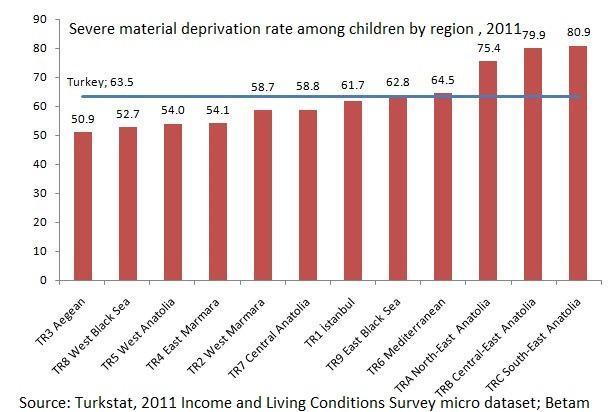Two out of three Turkish children in severe material deprivation

Almost a century ago, on April 23, 1920,
the Grand National Assembly of Turkey was founded in Ankara.
To commemorate the event, the day was declared Turkey’s first national holiday the following year. It was merged with Nov. 1, the National Sovereignty Day celebrating the
abolition of the Ottoman Sultanate, soon after. It also
unofficially became Children’s Day in 1927 thanks to the Children’s Protection Society. But it wasn’t until 1981 that the day officially became National Sovereignty and Children’s Day.
Since I have been telling you to
#RememberEsther for two weeks now, it was only natural that I spent most of the day thinking about her 16-month son, who is
5,435 miles away from her grandparents at the moment. I also made sure to
#RememberBerkin, the 14-year old boy who passed away on March 11 after several months in coma. He was shot in the head with a gas canister after leaving home to buy bread at the height of the Gezi protests.
Unfortunately, most of Turkey’s children are not in a much better position.
A research note titled “Two in Three Children Live in Severe Material Deprivation” was published by
Istanbul think-tank Betam on April 22. The authors use a European Union measure, which defines someone as severely materially-deprived if she cannot afford four of the following nine items: Rent, mortgage or utility bills; adequate heating for her home; unexpected expenses; a meal involving meat, chicken or fish every other day; a one-week annual holiday away from home; a washing machine; a color television; a telephone; a car.

The severe material deprivation rate among Turkish children below 16 was 63.5 percent in 2011. This rate was around 10 percent for most EU members, with the closest being Romania at 36 percent. You could argue that the inequality in Turkey produces such a high figure. While there is some truth to this claim, even in the Aegean, the region with the lowest severe material deprivation, the rate is more than 50 percent. It is as high as 80 percent in the southeast. I can never forget the pain I felt at seeing kids scramble through garbage in Diyarbakir in 2006.

You could also argue that some of the items in the EU measure are not absolute necessities. Betam researchers also look only at whether someone is able to keep her home adequately warm; eat meat, chicken or fish every other day; and replace her old clothes with new ones. Anyone who cannot afford any of these three items is defined to be in “basic material deprivation.”
Using this measure, the material deprivation rate among children falls to 25 percent, but two of three children cannot satisfy the nutritional requirement. The rate has decreased 10 percentage points since 2006, but most of the improvement is due to the decline in the clothing deprivation rate. Yet another blow to the
Santo Tayyipito myth!
I was going to say Happy Children’s Day, but what is the point when so many of Turkey’s children do not have much reason to be happy?
 Almost a century ago, on April 23, 1920, the Grand National Assembly of Turkey was founded in Ankara.
Almost a century ago, on April 23, 1920, the Grand National Assembly of Turkey was founded in Ankara.
